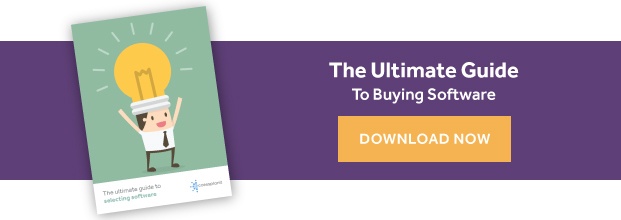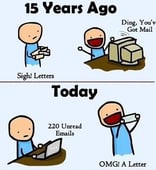How Not To Buy An LMS You Can't Stand [Buyer Insight]

We recently conducted some research to find out a bit more about the journey buyers take when looking for new business software. We explored the initial triggers for change along with some of the key influences of the decision and people involved in the process. This research provided valuable insight into some of the steps that are taken when businesses are looking for a new system. We thought we would share some of this insight to help existing businesses who are currently going through this process not to buy an awful LMS.
When looking for a system, it can be easy to dive into buying the first software system you see.
This can be due to a number of factors including time constraints or internal pressures. But, this way of purchasing can have disastrous consequences.
We asked experienced software buyers for their top tips on how to purchase an LMS and the criteria to look for.
Plot your journey

The most important part of the buying process is putting together a plan of action to determine timelines and requirements.
You have to be realistic with timescales as software can sometimes take a while to implement and get used to. Additionally, you should make this very clear to the suppliers you speak to ensure that they have the availability you require.
This plan will act as a guideline throughout the process and can be revisited to ensure that you do not miss any crucial milestones.
A buying plan helped all of the people we interviewed in ensuring that their needs were met throughout and that they did not lose sight of the reason they needed a system in the first place.
In order to face the problem, you have to clearly identify why you need a system. This includes details of any obstacles that you currently have to overcome and challenges that you are facing.
Use the key elements of training management to ensure that you don't miss any crucial areas when mapping your LMS requirements.
Many buyers spoke of the importance of identifying functionality requirements before starting their search
This information is crucial to inform your chosen software supplier as this will help them in meeting your needs appropriately.
Form your dream team

After identifying requirements, the next step that was frequently noted as an important stage throughout the process was forming the most suitable team. This team usually included decision makers who were responsible for different tasks.
For example, our research showed that IT Managers were usually responsible for finding a suitable system and recommending this to the learning and development departments or training teams who would then go on and evaluate the solutions against their requirements.
One study shows that the less people that are involved in the buying process, the quicker it is. However, the study also showed that if one person is responsible for making the final decision it can lead to upset among end users due to having little or no say in the selection.
Download this free eBook to take an in-depth look at how to gain buy-in from different departments within your organisation including Finance, Senior Management and End-Users.
It is extremely important that every member of the team fully understands the reasons for the new system and how it will be implemented within the business. This means ensuring that everyone is kept fully informed and up-to-date.
Review, review and review again

Searching for a system and selecting the most appropriate supplier can be difficult. Many of the companies who took part in our research expressed that they spoke to an average of 4-5 suppliers before making a decision. Use this comparison chart to help you to compare suppliers easily.
Only 27% of buyers took 6 months or less to make their business decision
Some companies organised demonstrations with numerous companies before selecting the most appropriate supplier. This gave them the opportunity to take a personal tour of the system and ask the experts any questions that they had.
Many suppliers offer a free trial but there really is no way to get a better feel for a product than from a one on one demonstration.
This article about questions to ask during a demo is really useful when preparing for demonstrations and ensuring that you get the most out of the opportunity.
On the same token, you don’t want to be taken through a generic sales pitch so ensure that you have provided enough information beforehand for a tailored demonstration such as completing a pre-demo questionnaire.
Choose the right supplier for YOU

When you begin using the system, you will need on-going technical support.
Many companies highlighted the importance of receiving on-going support even after they have implemented the software.
Ask the right questions. It is important to find a supplier who is willing to help you continuously to get the most out of your software and achieve maximum return on investment.
91% of research candidates stated that after sales support was important to their decision making process
At accessplanit, customer success is at the heart of our business. We assist all of our customers with on-going technical support and best practice and provide expert advice through a dedicated Customer Success Manager.
A CSM provides initial training and life-time support for the duration of the customers' relationship with us. This includes catch up calls to review on-going objectives and provides consultancy sessions. The aim of this is to help you optimise the use of your software and maximise your ROI.
If you want to find out more about the software buying process, download our software buyers guide to help you make the right decision.
Related articles include:
The Ultimate Guide For Buying Training Management Software
Buying An Automated System: Your Questions Answered



